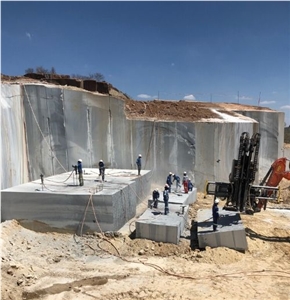Revealing the Mysteries of Granite Quarrying: Where Toughness and Style Meet
The world of granite quarrying is a world where the raw toughness of nature merges with human artistry to develop structures that stand the examination of time with an air of beauty. From the depths of quarries to the careful sprucing up in workshops, the procedure of transforming granite into architectural wonders is an intricate dancing of tradition and advancement. As we peer into the midsts of this ancient craft, we begin to uncover the covert details that form the very essence of our developed atmosphere.
The Origins of Granite Quarrying
In the record of architectural history, the origins of granite quarrying are shrouded in a tapestry of ancient craftsmanship and geological marvels. Going back to ancient Egypt and Mesopotamia, the extraction of granite from quarries noted the beginning of a trip that would at some point lead to the production of several of the globe's most legendary frameworks.
Granite quarrying's origins can be mapped to the proficient artisans who recognized the stone's toughness and visual charm. Via a combination of primitive devices and sheer resolution, these very early quarry employees uncovered granite blocks that would certainly come to be the building blocks of worlds.
As people evolved, so did the techniques of quarrying granite. The Romans, renowned for their engineering prowess, established sophisticated approaches for removing granite to create monuments, temples, and roadways that stood the test of time.
The heritage of these old quarrying techniques remains to form contemporary style, with granite staying an icon of strength and style in construction jobs around the world. (granite quarries in south africa)
Tools of the Quarrying Profession
The development of granite quarrying strategies from old worlds to modern times highlights the critical duty played by the tools of the quarrying trade in forming the sector's techniques. In old times, quarrying tools were simple, usually including chisels, hammers, and wedges made from products like bronze or iron. These devices required significant workforce and time to remove granite obstructs from quarries.

In addition, the intro of pneumatically-driven devices and high-powered equipment has actually dramatically reduced the physical labor required in quarrying procedures, boosting employee safety and productivity. As the quarrying sector proceeds to introduce, the devices of the trade remain at the forefront of driving progress and forming the future of granite removal.
Removing Blocks of Granite
Using precision equipment and advanced strategies, the removal of granite blocks from quarries has actually ended up being a sophisticated procedure in the modern quarrying sector. Controlled blowing up methods are after that utilized to damage apart the granite right into manageable areas.

Polishing and Ending Up Methods
To accomplish a flawless surface area on granite blocks, competent artisans use a series of thorough sprucing up and finishing strategies. After the preliminary removal and forming processes, the granite obstructs undergo a comprehensive sprucing up phase to boost their natural beauty and longevity. One common approach used in brightening granite is diamond abrasion, where commercial diamonds are made use of to grind and polish the rock to a smooth finish. This procedure not only produces a lustrous surface area but likewise makes certain uniformity in color and structure throughout the granite block.
In addition to sprucing up, ending up techniques are applied to additional improve the additional resources granite's look. These techniques may consist of flaming, sharpening, or brushing, each offering distinct structures and coatings to match different aesthetic preferences. Flaming, for circumstances, entails revealing the granite surface to high temperatures to produce a harsh, distinctive coating, perfect for outdoor applications where slip-resistance is necessary. Sharpening, on the various other hand, provides a matte surface that is smooth to the touch, ideal for indoor counter tops and floor covering. By meticulously selecting and using these brightening and ending up strategies, craftsmens can change raw granite obstructs right into elegant items that display both toughness and style.

Ecological Impact and Sustainability
With the expanding emphasis on ecological consciousness in the market, granite quarrying practices are significantly inspected for their influence on natural sources and long-term sustainability. Quarrying for granite can have significant ecological implications. The removal procedure typically entails the use of hefty equipment, explosives, and big quantities of water, resulting in environment devastation, soil disintegration, and water pollution. Furthermore, the transportation of granite from quarries to refining facilities produces carbon exhausts, further adding to ecological degradation. granite quarries in south africa.
To reduce these effects and make sure sustainability in granite quarrying, sector stakeholders are taking on different procedures. Applying advanced innovations to reduce power intake and water usage, recovering quarried land for ecological restoration, and promoting responsible sourcing methods are some strategies being utilized. Qualifications such as the Woodland Stewardship Council (FSC) and the Management in Energy and Environmental Design (LEED) help customers recognize ecologically friendly granite products.
Final Thought
To conclude, granite quarrying is a process that calls for specialized tools and strategies to essence blocks of click this link granite and polish them to a high degree of finish. While the ecological effect of quarrying can be significant, initiatives are being made to improve sustainability techniques in the market. Overall, granite quarrying is a fragile balance in between taking advantage of the strength and style of this natural rock while reducing its influence on the atmosphere.